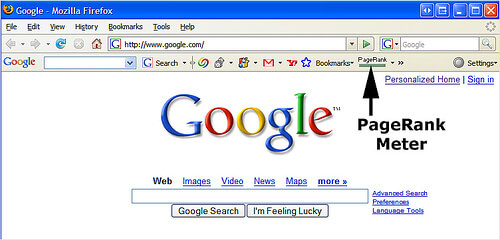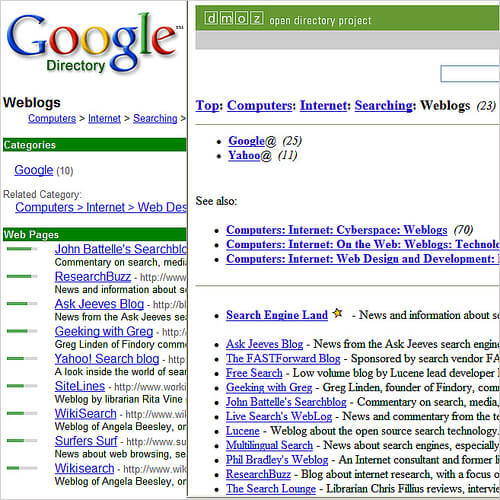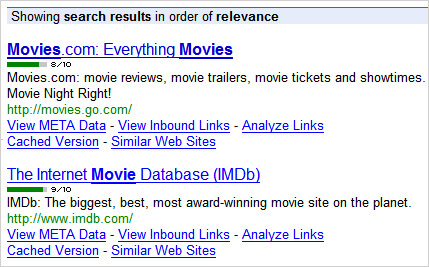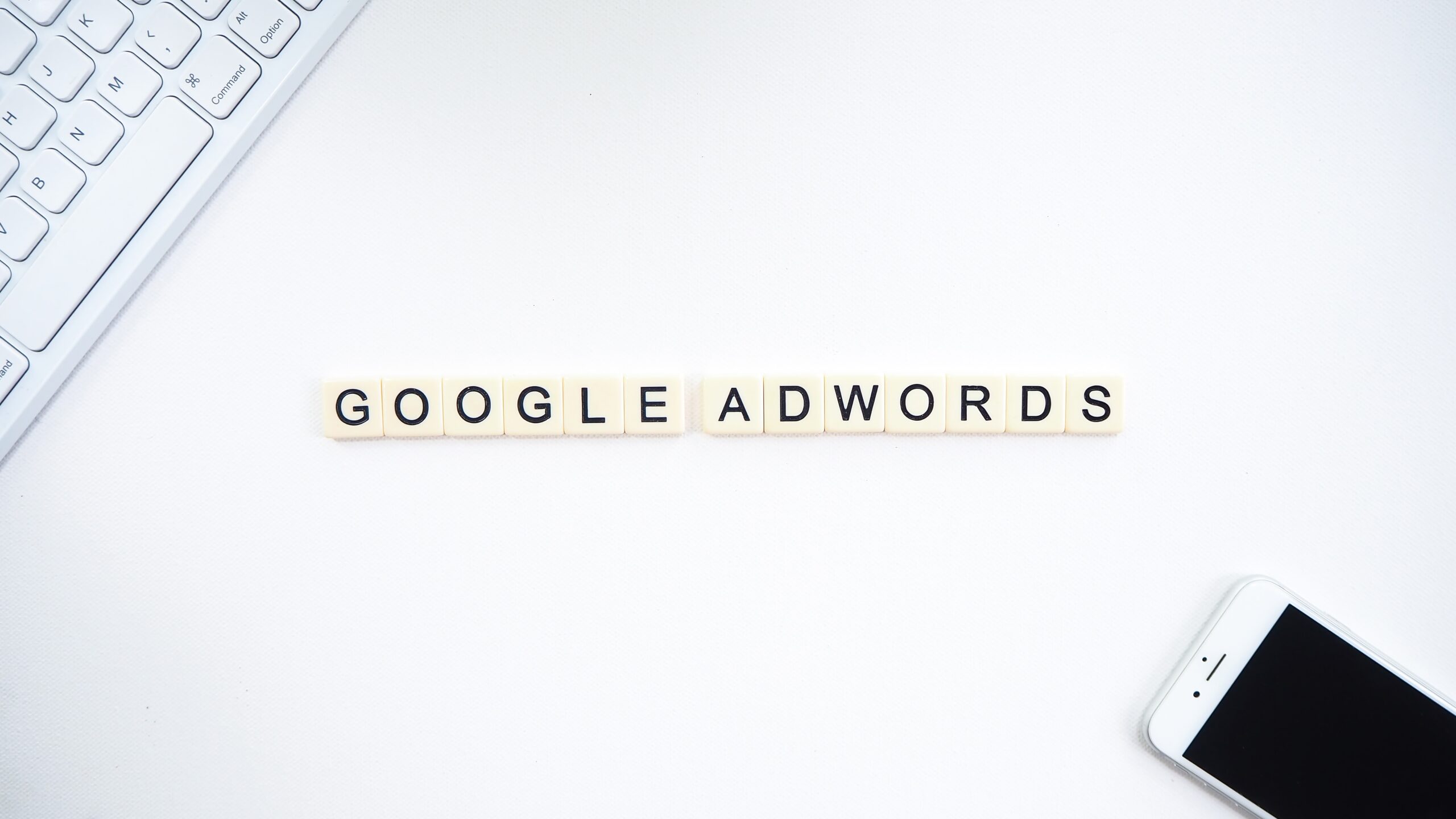Google PageRank: What Is It? A Guide For Webmasters And Searchers
PageRank. This topic will come up at some point if you work in search engine optimization or are involved with Google or search. You’ll likewise probable be confounded by what precisely PageRank implies. This PageRank guide is intended for both site owners and search engine users to address this issue. Definition by Google: PageRank As Votes Let’s begin with Google’s statement.
PageRank. This topic will come up at some point if you work in search engine optimization or are involved with Google or search. You’ll likewise probable be confounded by what precisely PageRank implies. This PageRank guide is intended for both site owners and search engine users to address this issue.
Definition by Google: PageRank With Votes
First, let’s look at what Google says. Simply put, it considers links to be equivalent to votes. Also, it looks at that as some votes are a higher priority than others. Google uses a method called PageRank to count link votes and determine which pages are most important. Then, these scores and a lot of other factors are used to figure out if a page will rank well in a search.
Don’t like the way I represent Google? Don’t worry. Google frequently refers to Google Technology when discussing PageRank on its website. At the heart of our software is PageRankTM, a ranking system for web pages created by our founders, Larry Page and Sergey Brin, at Stanford University. In addition, even though we have dozens of engineers working every day to improve every aspect of Google, PageRank continues to be a major component of many of our web search tools.
PageRank – An Overview
PageRank depends on the particularly just nature of the web by utilizing its tremendous connection structure as a mark of a singular page’s worth. Google sees a link from page A to page B as essentially a vote for page B by page A. However, Google looks at a lot more than just the number of votes or links a page gets; for instance, it likewise dissects the page that makes the choice. The votes cast by pages that are also “important” have a greater impact and contribute to the designation of other pages as “important.” Google presents its views on the relative importance of pages based on these and other factors.
Obviously, significant pages make next to no difference to you in the event that they don’t match your question. So, Google finds pages that are both important and relevant to your search by combining PageRank with sophisticated text-matching strategies. To determine whether a page is a good match for your query, Google looks at dozens of aspects of the page’s content—as well as the content of the pages linking to it—far beyond the number of times a term appears on the page.
Late Google Alters Accentuate PageRank Only One Of Many Variables
Why is the text in bold and with strikeouts? I noticed that this important page had been updated for the first time in years between when I started writing this article and when I finished it today. What I think should be added is highlighted. What was taken out is shown in strikeout.
On the Google corporate philosophy page, another important reference to PageRank was also updated:
Google works because millions of people post links to other websites to help figure out which other sites have useful content. Google evaluates the significance of each and every website page utilizing various procedures, including its licensed PageRank™ calculation which examines which destinations have been “casted a ballot” the best wellsprings of data by different pages across the web.
Because each new website is a new source of information and a new vote to be counted, this method actually gets better as the internet grows in size.
The alterations are intriguing. PageRank is important, but it is not the only factor that affects how pages are ranked, according to Google, with some caveats. That’s good because, as I’ll explain, too many people have spent too much time focusing on PageRank scores.
For Search Engines: Tools for Google
How about we start with how PageRank is utilized by Google for searchers. It is, without a doubt, one of many factors used to rank pages. Normally, you can’t see PageRank when you search. I’ll explain how you CAN see it further down, but in the background, it helps decide whether a page will appear in the top search results or not.
PageRank is encountered by the majority of searchers via the Google Toolbar. The “PageRank meter” in the toolbar is not fully explained by Google in its online help files. For instance, when I was writing my article titled “Google Search History Expands, Becomes Web History” last week, I took some time to search through all of the help files for the Google Toolbar in search of a suitable explanation to link to regarding the meter.
This was the best I found, a short notice that says:
Do you want to know if a brand-new website is worth your time? You can learn how Google determines the importance of the page you are viewing by using the PageRankTM display in the Toolbar.
The process is as follows: Assuming you’ve introduced the Google Toolbar, you Might have the PageRank meter introduced. If so, you’ll see the following:

Is that huge, long green bar visible? The PageRank meter is that. The PageRank score for the page you are currently on will actually be displayed to you if you use your mouse to hover over it:

Not terrible — Google’s landing page has a PageRank score of 10! See this section:
(10/10)
That is Google letting you know first the score of the page you’re checking out (10) and the most extreme worth a page can have by and large (10). Google is flawless!

Isn’t that a 7/10? This indicates that we have a PageRank of 7 out of 10 points. Not quite perfect. Take a whiff. It’s OK. For a website that has only been online for four months, that is an excellent score.
Notice how the bar isn’t entirely green, as opposed to being “full” with Google? Instead, to visually represent the page’s PageRank score, it is only partially filled 7/10ths of the way, like a thermometer.
Another page is here:

Ouch! Zero! A terrible page like this! In fact, no. In this instance, I attempted to access a Search Engine Land page that does not exist. That made a mistake for me. Google is unable to provide a PageRank score due to the absence of the page. Because of this, you receive a score of 0 out of 10. Also, notice that there is no green on the meter, indicating that the page has no PageRank.
Numerous searchers might have never seen the PageRank meter. This is because, up until last week, it was never turned on by default. You had to choose whether or not to do it, and most people who worked in search engine optimization did so.
[Postscript: Matt Cutts of Google made the following observation after reading this: Additionally, opting in to PageRank is a popular choice among the general public. I think there are a lot more people who choose to see PageRank than there are active SEOs.
The fact that a larger number of searchers will soon begin to see PageRank scores is explained in Google Search History’s expansion into Web History. This is because the Google Toolbar may be downloaded with it enabled in some instances. In different cases, Google will urge you to turn the meter on. Read the article for more information.
Try not to have the PageRank meter turned on and you really do need it? Content with the protection gives my article makes sense of (as does find out about itself)? In the toolbar’s Settings menu, select Options, then the More tab. In the “Even more buttons” section, select the “PageRank and Page Info” button. The meter is now operational.
PageRank is the acronym for PR, not PR.
When we talk about people who work in search engine optimization, we should mention the SEOs who came up with the acronym you might occasionally hear: PR refers to PageRank.
For instance, Google’s home page with a PageRank of 10 would be abbreviated as PR10. PR7 is Search Engine Land, scoring 7 out of 10. That blunder page? PR0.
The Google Directory’s PageRank
Did you know that instead of Google’s web crawling, there is a place in Google where pages chosen by humans are listed? The Open Directory Project’s editors served as the foundation for what is now known as the Google Directory.
At the point when Google added the Open Catalog’s data to its site back in Walk 2000, the key distinction was that the Google Registry version arranged postings as per PageRank score.
Take, for instance, the Open Directory’s category about search blogs:

Google is shown on the left and the Open Directory is shown on the right; these are identical categories. They ought to be almost identical. There are two main reasons they aren’t.
To begin, Google is extremely out of date. As you can see, there are a lot more listings in the Open Directory than Google displays. For probably months, Google hasn’t taken the time to download the most recent Open Directory listings. It comes as no surprise that. In March 2004, the Google Directory, which had been a crucial component of Google, was moved to the More Google Products page instead of the Google home page. It’s anything but really important. Moreover, the Open Catalog itself has been down or not making new data accessible for download once in a while.
The other key distinction is that the postings in the Google Registry are arranged by PageRank. Notice how each website has a PageRank meter image next to it under the “Web Pages” bar in the Google Directory? That displays the page’s PageRank score for searchers. According to the help pages of the Google Directory:
(Like the other help pages above, I discovered that the Google PageRank information for the Google Directory has recently been updated; the new information is highlighted in bold, and the old information is highlighted in strikeout).
SEOs’ PageRank
I have talked about the two main ways that PageRank is seen by search engines and mentioned that it is one of many factors that helps rank webpages behind the scenes. SEOs naturally care a lot about how pages are ranked.
When the PageRank meter first appeared in the Google Directory and then in December 2000 via the Google Toolbar, far too many SEOs became fixated on it. They didn’t realize that PageRank was not enough and concentrated on getting links from pages with a high PR.
In a 2002 essay, I wrote:
The issue of links and search engines, particularly how Google’s use of links is perceived, has grown out of control. Many people have abandoned the original purpose of linking in favor of doing whatever they think Google would like.
Although all of the major crawler-based search engines use links from across the web, none of them provide a static “importance” score like Google’s Google Toolbar does. In addition to being an excellent tool for web surfers, that score has provided one of the few insights into how Google ranks web pages. A few website admins, frantic to get inside Google, continue to fly into that window like befuddled birds, smacking their heads and losing their direction… .
Despite the fact that link context and a great number of other factors are used by Google to rank a web page, site owners are using the toolbar to find “good” sites from which to get links. When other site owners receive a gray PR0 toolbar, they immediately assume the worst—that their site has been blacklisted.
Please, enough is enough. Put the Google Toolbar meter to rest. According to Google, “good” and “bad” links should not be a concern. When it comes to building links, don’t even think about Google.
By the way, Google’s estimate of a page’s importance is considered to be Google’s opinion and is protected by the First Amendment in the United States. PageRank is only a score. At the point when Google was once sued over modifying PageRank scores for certain destinations, a US court dominated: ” PageRanks are sentiments — assessments of the meaning of specific Sites as they compare to a hunt inquiry… .the court closes Google’s PageRanks are qualified for full established insurance.)
Get a connection to your pages from a high PR page and indeed, a portion of that PageRank significance is sent to your page. However, this neglects the anchor text’s context, which includes the words in the link. Google Now Reporting Anchor Text Phrases, which I shared with you last month, will help you understand anchor text better if you don’t already.
Here is a brief summary. Let’s say you’re Nike and you want to rank for “shoes.” By doing this, you can get links from hundreds of PR9 pages:
- Nike
Excellent! You’re going to get a lot of PageRank from all those pages! You’ll be regarded as significant! However, significant for what? To figure that out, Google will use the word in the link as a crucial signal. The word says “Nike,” so cheerful day, Nike positions for its name!
Now suppose you are Zappos. Not being pretty much as large as Nike, you don’t get joins from every one of those PR9 locales. Instead, you get them from a combination of PR4, PR5, and PR6 sites. This is how they all link to you:
- Zappos For Shoes
The significance of the connections is less, valid. However, they are significant. They convey some weight. Additionally, what they say and how pertinent the words are are crucial. In the links, they are pointing at you and using the word “shoes.” That will assist you with positioning better for “shoes,” in all likelihood far superior to that multitude of connections Nike has.
Don’t think so? While Google Kills Bush’s Miserable Failure Search & Other Google Bombs and George W. Bush: Explains how the words in the links to Colbert Nation, rather than the PageRank from those links, recently shot that site up in the ranking for “greatest living american.” Google Declares Stephen Colbert as the Greatest Living American Explain how the words in links used to affect George W. Bush’s ranking on “miserable failure” in A Failure Once Again, According to Google.
PageRank in Search Engine Rankings
Still not convinced that PageRank isn’t the most important factor in achieving good Google rankings? I’ve shown it in this manner for years. If you search for something, check to see if any of the pages below the first one have a higher PageRank score than the first one. That demonstrates that PageRank is not the most important factor, as it is.
We should outline it. A movie search looks like this:

Notice how the PageRank meters in the search results? That was accomplished by utilizing SEO Chat’s PageRank Search tool. Notice how the Internet Movie Database has a PR9, while Movies.com has a PR8? Despite having a lower PageRank, the page maintained its higher search rank!
Are you happy to see these scores in your results? That is not an option for searchers on Google. Is that odd? It makes perfect sense and reaffirms my main point.
Search rankings are determined by a variety of factors, one of which is PageRank. The searcher is not helped by search results that highlight PageRank. This is because Google uses a different method to display the most relevant pages for a specific search you perform. It lists them in order of their relevance to the search terms you used. People would simply be perplexed if search results included PageRank scores. They’d be puzzled as to why pages with lower scores were ranking higher than pages with higher scores.
On the other hand, when you’re just looking at one page, like when you’re browsing the internet, you don’t care about the page’s search ranking but rather how important or reputable it might be. PageRank makes more sense in this situation.
Naturally, SEO professionals and others may desire PageRank in search results. This is done by many tools, including the one above (have a favorite? had a favorite written? add them to the remarks beneath). For a program based instrument, attempt Website optimization For Firefox from Web optimization Book.
PageRank Versus “Toolbar” PageRank
Those scores on PageRank that you can see? Those are frequently alluded to as “toolbar” PageRank. This is not the same as what is commonly referred to as “internal” PageRank.
The PageRank scores that Google uses in its ranking algorithm are known as internal PageRank. Those scores are continually being refreshed. Conversely, the PageRank scores that Google permits the world to see — Toolbar PageRank — is a depiction of interior PageRank required at regular intervals.
What is significant here? The Google Toolbar will likely display a low or no PageRank score for a brand-new website. That could concern you, despite the fact that it will
generally influence whether you get slithered consistently (the higher your PageRank, the more probable Google will routinely return to your pages). Naturally, it has an effect on your ability to rank.
All things considered, following half a month, you’ll have acquired some inner PageRank. As a result, you might see more visitors. However, the Google Toolbar PageRank meter will continue to display your same depressing score on the outside. After that, a snapshot will be taken, and the higher your score, the more accurately it will reflect what has already taken place behind the scenes.
Matt Cutts of Google provides additional information regarding PageRank, including additional details regarding this aspect. You can likewise attempt the Future PageRank device on the off chance that you hear from different sources that a PageRank update is in the works for the toolbar. It might give you a sneak peek at the score that’s to come.
Technical discussion
PageRank gets its name from Google prime supporter Larry Page. You can peruse the first positioning framework to ascertain PageRank here, assuming that you need. While you’re at it, check out the original paper about how Google worked here. Yet, for taking apart the way in which Google works today, these records from 1998 and 2000 won’t help you much. In any case, they’ve been pored over, dissected and sadly in some cases rambled as the good news of how Google works now.
Check out Ian Rogers’ The Google Pagerank Algorithm and How It Works and Phil Craven’s long-running Google’s PageRank Explained if you still feel the need to learn more about PageRank, at least how it used to work.
Wikipedia, normally, has a section about PageRank with additional assets you may be keen on. It also talks about how some redirect-based websites can pretend to have a higher PageRank score than they actually do. And since we’re getting technical, PageRank isn’t actually a 0 to 10 scale; it’s just an algorithm. Interior scores are extraordinarily streamlined to coordinate to that framework utilized for noticeable announcing.
How does Google rank and collect results? A good read on the fundamentals of Google’s page ranking algorithm, including PageRank as one component, can be found in a piece that Matt Cutts wrote for Google Librarian Central.
Particularly for those who believe they lack the time to read
I could go on and on about PageRank, but I hope this gives you a good overview and some clarity. Important points to keep in mind:
- PageRank indicates how important a page is in relation to other pages.
- PageRank is only one of MANY positioning elements used to decide positioning in list items.
- A high PageRank does not guarantee a high search term ranking. In the event that it did, PR10 destinations like Adobe would constantly appear for any pursuit you do. They are not.
- The importance of a link’s anchor text often outweighs its location on a page with a high PageRank.
Forget PageRank if you really want to know which pages are most relevant and important to get links from. Consider search rank. Find the words you want to rank for. Examine the top-ranked pages on Google. Those are the pages that matter the most to you and are most important. This is because Google is stating explicitly that these are the best on the subject you searched for.
Member read also next article
Active Backlinks: Are They Advantageous To Your Website Or Not?



